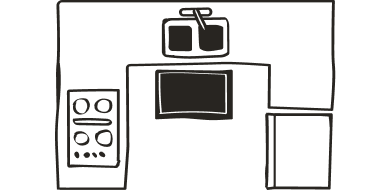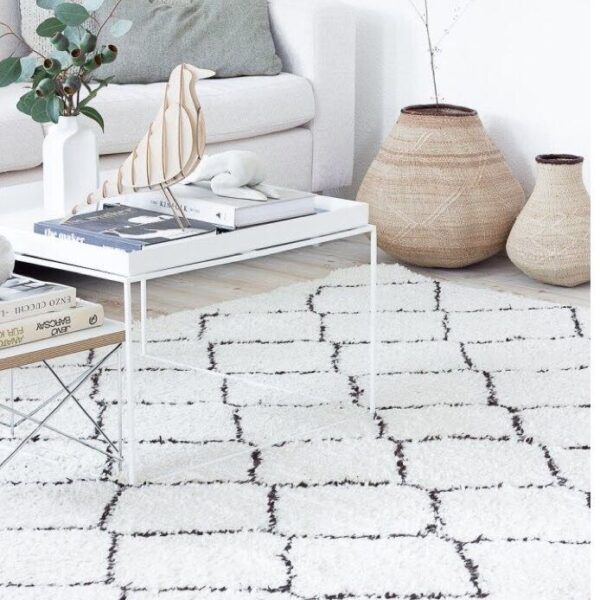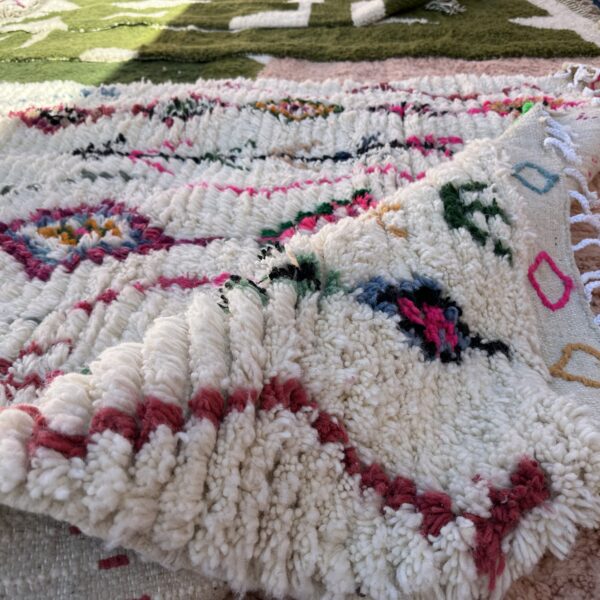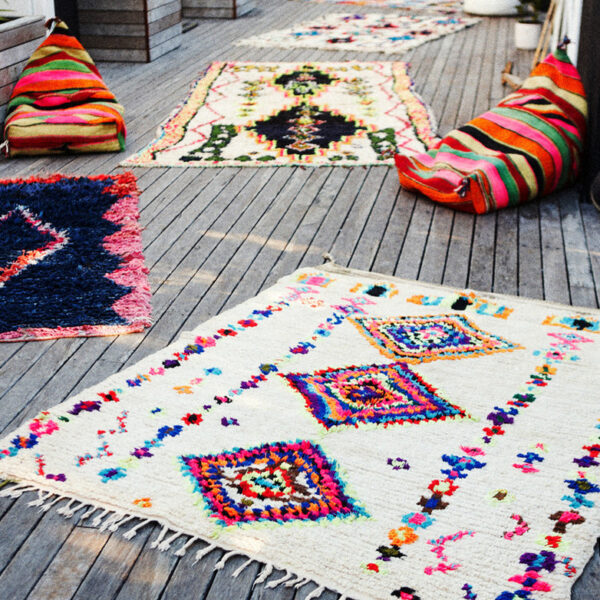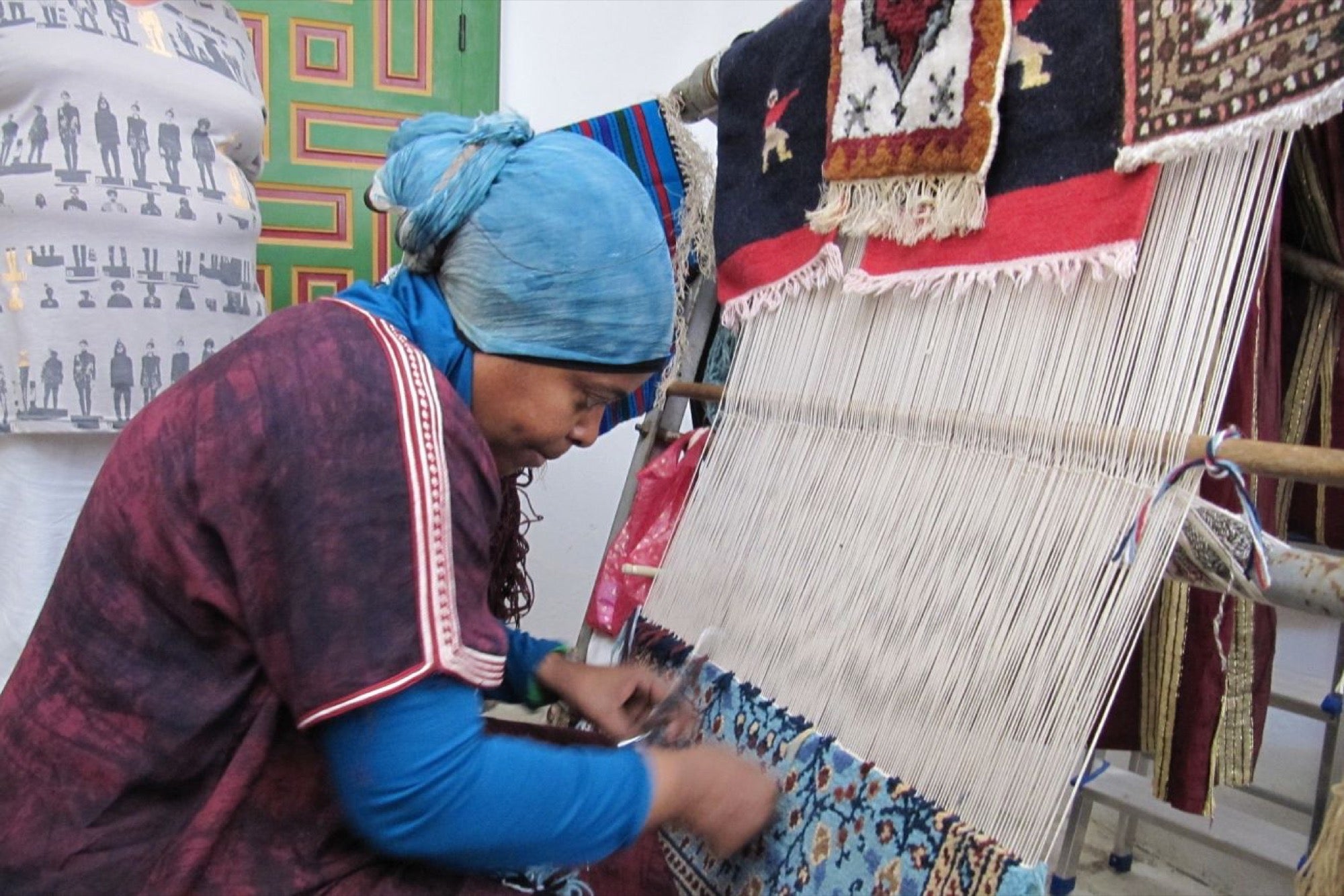Moroccan rug weaving relies on traditional techniques that have been passed down through generations. These techniques are labor-intensive and require skill and precision. Some of the key techniques used in Moroccan rug weaving include:
- Hand-Knotting: Hand-knotting is the primary method used to create the pile (the raised surface of the rug). Weavers tie individual knots using strands of wool or other materials around the warp (vertical threads) and weft (horizontal threads). The density of knots and the tightness of the weave affect the rug’s thickness and durability.
- Flatweave (Kilim): In addition to pile rugs, some Moroccan rugs are woven using a flatweave technique, also known as Kilim. Kilim rugs are made by interweaving the weft and warp threads to create a flat, non-pile surface. These rugs are thinner and have distinct designs.
- Looms: Moroccan weavers typically use vertical-frame looms that are simple in construction and portable, making them suitable for traditional home-based rug weaving. These looms allow weavers to create rectangular rugs of various sizes.
- Symmetrical Knots: In some regions, Moroccan rug weavers use symmetrical knots (also known as Turkish knots) to create their designs. This knotting technique involves wrapping the wool yarn around two warp threads, resulting in a more symmetrical appearance on the back of the rug.
- Asymmetrical Knots: In other regions, weavers use asymmetrical knots (also known as Persian knots) to create their rugs. Asymmetrical knots involve wrapping the wool yarn around one warp thread and looping it behind another. This technique is often used in Azilal rugs.
- Natural Dyes: Moroccan weavers frequently use natural dyes to color the wool. These dyes are made from local plants, minerals, and other natural sources, contributing to the rugs’ rich and earthy color palettes. The process of dyeing the wool is an essential part of rug making.
- Embellishments: Some Moroccan rugs incorporate additional decorative elements such as sequins, buttons, or cowrie shells. These embellishments are often sewn onto the rug’s surface to enhance its visual appeal.
- Pattern and Design: The intricate patterns and designs in Moroccan rugs are created by the weavers’ skill in using specific knotting techniques. The designs often feature geometric shapes, abstract motifs, and cultural symbols, which vary depending on the region and tribe of origin.
- Personal Expression: Moroccan rug weaving allows for personal expression, and many weavers incorporate their own stories, beliefs, and cultural heritage into the designs. Each rug is a unique piece of art, reflecting the weaver’s creativity and identity.
The combination of these techniques, along with the use of natural materials and the weaver’s individual creativity, results in the distinctive and diverse Moroccan rug designs that are highly sought after in the world of interior design and textile art.




